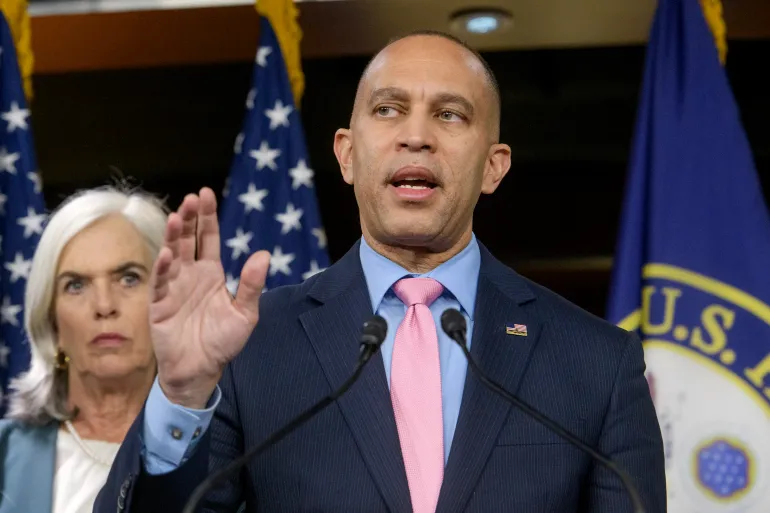In a speech delivered on May 8, 2025, U.S. House Minority Leader Hakeem Jeffries claimed that “about 20% of households with veterans rely upon supplemental nutritional food assistance.” The comment, made during a discussion on potential cuts to federal support programs, drew significant attention and triggered scrutiny from fact-checkers. But is Jeffries’s figure supported by the data?
A review of federal and independent research shows that the number cited by the New York Democrat is significantly higher than actual statistics. According to an April 2025 report by the Center on Budget and Policy Priorities (CBPP), which used U.S. Census Bureau data from 2021 to 2023, about 8% of veterans live in households that receive Supplemental Nutrition Assistance Program (SNAP) benefits. That’s less than half the rate Jeffries claimed.
The CBPP report also notes that no U.S. state has a SNAP participation rate for veterans reaching even 15%. Oregon leads the nation with a 14% rate, while Louisiana, New Mexico, and West Virginia follow at 11% each. Other states hover below that range, placing Jeffries’s 20% figure far outside current data bounds.
Historically, the figures have also remained much lower than what was suggested by Jeffries. For instance, a 2021 study from the Rand Corporation estimated that from 2015 to 2020, approximately 4.9% of veterans lived in households that received SNAP benefits. In 2019, the Government Accountability Office (GAO) reported that 6.5% of all veterans received SNAP benefits. Meanwhile, the U.S. Department of Agriculture (USDA) noted in a 2021 release that the average SNAP participation rate for veterans during 2018 and 2019 was about 6.6%.
It’s important to clarify that Jeffries framed his statement around “households with veterans,” not individual veterans themselves. While this could suggest a slightly broader pool, there is no existing data supporting the idea that veteran households face a SNAP reliance rate as high as 20%.
Al Jazeera notes that while Jeffries’s intent might have been to highlight the real economic struggles many veterans face, his use of an inflated figure could distort public understanding and undermine the credibility of his broader message. Critics argue that such exaggerations, even if well-intentioned, harm policy discussions that require precision and trust.
Veterans’ rights advocates and anti-poverty organizations have long pointed out that thousands of former service members do rely on food assistance and that ensuring adequate federal support is essential. They argue that underreporting the issue can be harmful—but so can inflating it.
As U.S. lawmakers debate the future of food assistance and federal support programs, particularly with proposed budget cuts on the table, facts and data are central to guiding effective decisions. Jeffries’s statement, while drawing attention to a serious concern, is ultimately not supported by the available evidence.
In conclusion, the claim that 20% of veteran households rely on food stamps is significantly overstated. The actual figure, supported by multiple sources, sits closer to 8%. No current data or state-specific statistics come close to validating the 20% figure. As debates continue on food security, especially among vulnerable populations like veterans, accurate representation of data remains essential for informed policymaking and public trust.
Source; Al Jazeera



